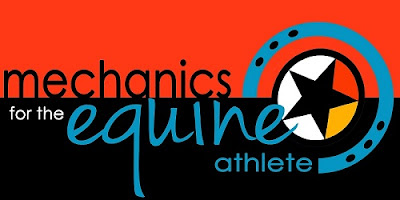Every rider, whether riding for leisure or competing, needs a good program to keep their horses sound, happy, and healthy. Training aside, there are many aspects of a program that need to be addressed in order for it to be successful, but the one I chose to discuss today in this blog is arena footing.
Arena footing can make or break your horses career. Many soundness issues and even training issues could be completely avoided if the horse was not being asked to perform on sub par arena footing. Something that I have found as a bodyworker is that far too often not given enough thought. We all know that footing that is too hard, too deep, too slippery, etc can cause undue stress on our horses tendons, ligaments, and muscles. But what about a horse that is asked to jump on ground that is too slippery? Or a reining horse that is asked to stop on ground that is shallow and hard? In addition to injury, what can occur is a total loss of confidence. If they are protecting themselves from what they determine as a harmful situation, how are they going to be able to perform to their best ability?
Sometimes I feel that I might as well be an alien when I remark that I won't ride and/or ask my horse to perform any maneuvers in such and such arena. Why would I want to risk my safety or the safety of my horses by riding on hazardous ground? I wouldn't! In all fairness, however, I think a lot of equestrians just haven't taken the time to educate themselves on this very important aspect of their program. Not everyone is a "dirt diva" like I am!
The top 5 common mistakes of arena maintenance are:
1. Allowing animal waste to remain in the arena and become ground into the footing.
2. Turning horses out in the arena.
3. Letting horses roll in the arena.
4. Not dragging and watering often enough.
5. Standing water.
Footing that is too deep causes fatigue. Quickly. This is a recipe for a torn suspensory and/or other type of soft tissue injury due to over flexion. A good test is to run in the arena yourself and see how it feels. Kick the dirt around. Dig a line in the sand. Every discipline is going to vary with its footing needs but if it's quickly fatiguing you, odds are it will be doing the same to your horse. Some disciplines require deeper footing but deeper does not necessarily mean it should be heavy. Dense, heavy footing is the root of many problems regardless of the discipline.
Footing that is too hard causes concussion injuries. It should have enough resilience to minimize concussion yet be firm enough to provide adequate traction for the type of riding you do. If you can scuff down no deeper than approximately an inch with your foot, it is too shallow. When horses' break down to the base, it's going to be extremely slippery... not to mention scary! In most cases you should see a hoof imprint not deeper than 1” with no shifting of sand. Also listen to the hoofbeats, the less you hear, the better.
Base is typically a 6" minimum to 9" of materials such as compacted screenings or crushed limestone. This is not a place to skimp on cost! If you are using clay as both the base and sub-base, be careful. Clay is very sensitive to water and can become extremely slippery. Clay is typically best suited for use a sub base.
Good arena footing should last around 10 years but bad arena footing may not last even a year. It all begins with a good foundation.
Drainage is essential. Pools of water create unstable spots and will compromise the base and sub layers. French drains, which carry water away from the arena are a popular choice for outdoor arenas.
The more traffic in your arena, the more you need to drag. When done properly, dragging maintains the integrity of your footing. You should never wait so long to drag that you see ruts in your footing. If you wait until this happens, you have waited too long! Personally, I drag every day I ride.
Animal waste and dead sand are common waste products that contains all sorts of silts and clays and other unmentionables. The worst of all is manure. It is so common to see riders not picking up their horse's manure or even dumping stall cleanings in an arena. GASP! This is a surefire way to send a certifiable dirt diva into cardiac arrest. The waste will become even more dense when you add sawdust or shavings. Speaking of shavings. Sawdust and shavings are also common "fills" for arenas. Fact of the matter is though that shavings are slippery, unsanitary, and dusty.
In closing, anything occurring in an arena that you would describe as too deep, too hard, too loose, too dusty, shifting, rolling, and not draining is undesirable. And it will likely save you valuable money in vet bills to avoid such ground.

No comments:
Post a Comment